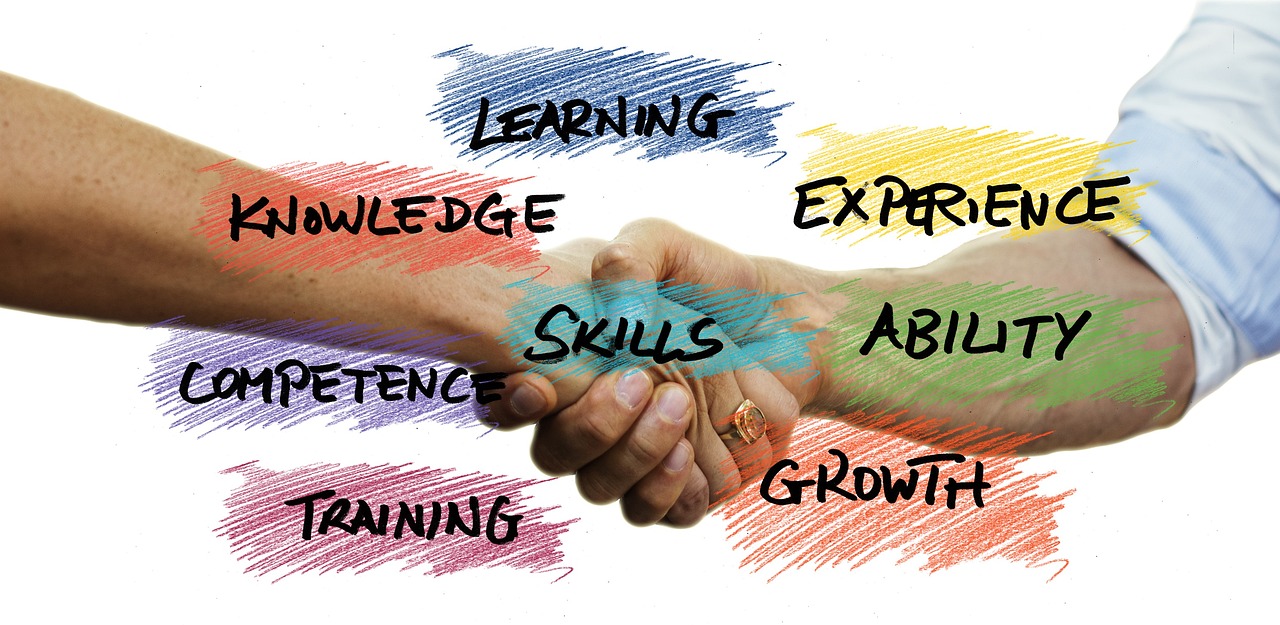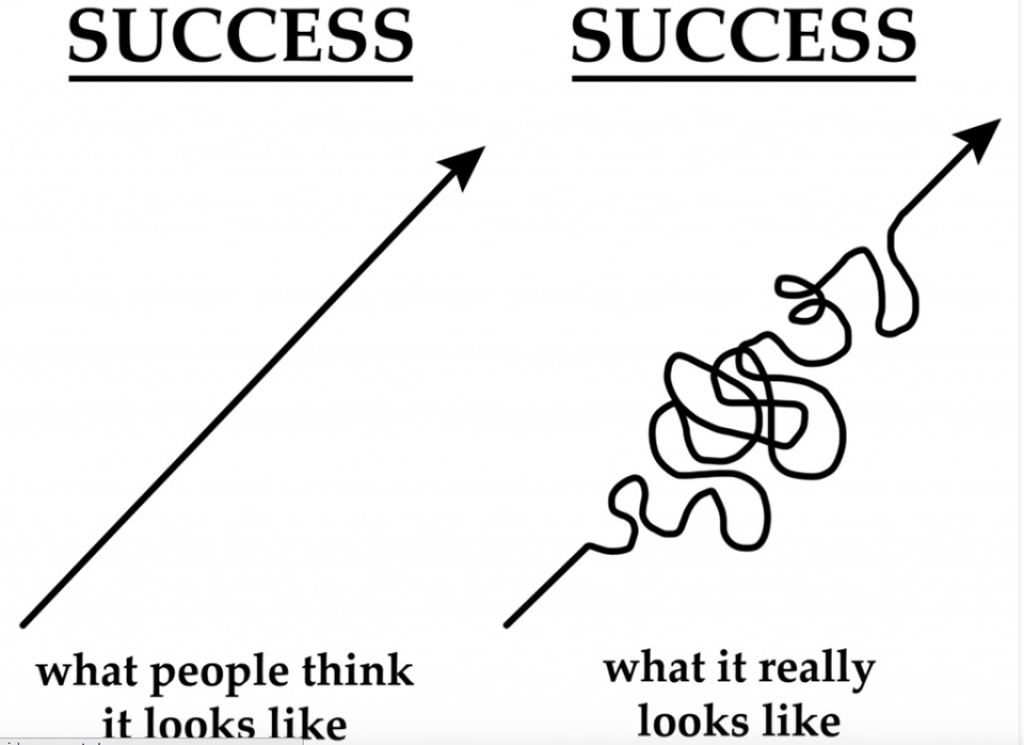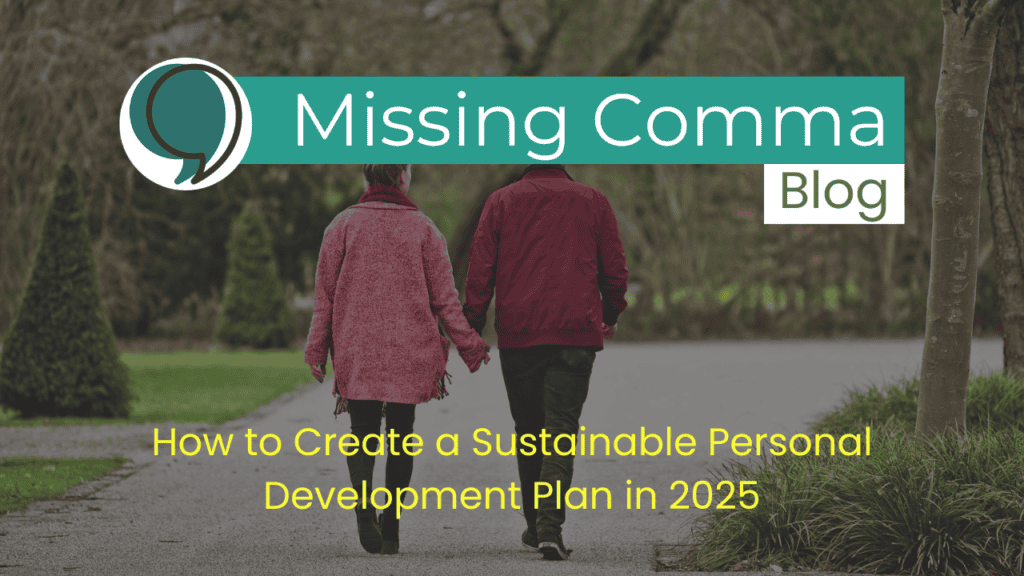My content may contain 3rd party affiliate links for products I use and love. If you take action (i.e. subscribe or purchase) after clicking one of these links, I'll earn some coffee money ☕ which I promise to drink while creating more helpful content.
Introduction
I used to think that building a personal development plan was overwhelming. So I never did it.
But the thing is that, if you do it, this tool can transform your life. You'll end up with clear direction and actionable goals.
What finally got my attention was the fact that people who set structured goals are 42% more likely to achieve them? That’s the power of a well-thought-out plan!
In this article, you’ll learn how to:
Design a personal development plan that fits your lifestyle.
Break your plan into actionable, realistic steps.
Ensure long-term success with practical tips and strategies.
Let’s get started.
What's a Personal Development Plan?

A personal development plan is like a roadmap for your growth. It’s a tool to help you clarify your goals, focus on what truly matters, and create actionable steps to achieve your dreams. Think of it as a structured way to get from where you are
now to where you want to be—without feeling lost along the way.
At its core, a personal development plan works because it forces you to pause and think about your life holistically. What are your strengths? Where do you want to improve? What kind of future are you building for yourself? By answering these questions, you create a blueprint that aligns your efforts with your personal values and ambitions.
Key Benefits of a Personal Development Plan
Real Life Example
Take Sarah, for instance. She wanted to shift careers and work from home but felt overwhelmed by all the steps involved. By creating a personal development plan, she mapped out her skills, identified the additional skills she needed, and broke her long-term goal into monthly tasks. Two years later, she’s thriving in her new business—all because she gave herself a clear plan to follow.
Assess Your Current Situation

Before you can create a meaningful personal development plan, you need to know where you are now. Assessing your current situation helps you identify your strengths, weaknesses, and the areas of your life that need attention. It's like
taking stock before setting out on a journey—you can’t map out a route without knowing your starting point.
Why Self-Assessment Matters
If you’re not clear about your strengths and weaknesses, how can you create a realistic growth plan? Self-assessment gives you a clear picture of your life today. Knowing that lets you highlight areas where improvement can have the biggest impact. It’s a process that delivers self-awareness and honesty.
How to Do a Self-Assessment
Practical Exercise: Your Life Audit
Grab a journal or a notebook, and divide your life into categories—career, personal relationships, health, finances, and personal growth. For each category, rate your satisfaction on a scale of 1 to 10. Then, jot down what’s working well and what needs improvement. This exercise helps pinpoint where to focus your efforts in your personal development plan.
Set Clear and Attainable Goals

Once you know where you stand, it’s time to decide where you want to go. Setting clear, attainable goals is the cornerstone of a sustainable personal development plan. Without goals, you’re just drifting. With them, you have a
clear destination—and a reason to keep going, even on tough days.
What Makes a Goal Effective?
You've probably heard this before. The most effective goals are SMART:
Different Types of Goals to Include
Short-term goals: These keep you motivated in the here and now. Example: “Read one personal development book this month.”
Medium-term goals: These bridge the gap between now and your big dreams. Example: “Complete a certification course within six months.”
Long-term goals: These represent the ultimate outcomes you’re working toward. Example: “Transition full-time to my new business in two years.”
Common Goal-Setting Mistakes to Avoid
One of the biggest traps in goal setting is trying to do too much at once.
A few years ago, I decided I’d overhaul my entire life all at once —new workout routine, better eating habits, learning a new skill, and more. By week two, I was completely burned out and felt worse than before I started.
The problem wasn’t my ambition; it was my lack of focus. Goals work best when they’re realistic, specific, and aligned with what you truly value—not when they’re overwhelming or based on external expectations.
Vague goals like “I want to improve my life” or chasing someone else’s dream often leave you feeling stuck and frustrated. Learning to set fewer, clearer goals changed everything for me.
A Simple Goal-Setting Exercise
Here’s a quick way to start:
1. Write down one short-term, medium-term, and long-term goal.
2. For each goal, list three steps you’ll take to make progress.
3. Add deadlines to each step so you stay accountable.
Break it Down Into Actionable Steps

Big goals can feel intimidating. That’s why the secret to achieving them lies in breaking them down into smaller, manageable steps. This approach helps you focus on progress rather than perfection, keeping you from feeling stuck or
overwhelmed. Think of it like climbing a mountain—one step at a time gets you to the summit.
How to Turn Goals into Actionable Steps
Start by taking your main goal and asking, “What’s the first thing I need to do?” Then break that down even further. For example, if your goal is to learn a new language, your first step might be to research the best apps. The next step could be setting aside 20 minutes a day for practice. Every small action builds momentum.
The Importance of Prioritization
Here’s a tip: not all steps are created equal. Focus on the ones that will make the biggest impact first. When I started working on my personal development plan, I made the mistake of trying to tackle easy, less important tasks first, thinking it would boost my confidence. Instead, I just wasted time. Prioritizing the harder but more meaningful steps helped me see real progress faster.
Tools to Keep You Organized
Planners and Journals: Perfect for mapping out daily or weekly tasks. Although I'm mostly app-driven, even in this day and age, I can't completely go without paper.
Apps like Trello or Let's Goal: Help track progress and set deadlines.
Habit Trackers: Great for staying consistent with recurring tasks.
Action Plan Exercise
Here’s a quick way to break things down:
1. Take one of your goals and write it at the top of a page.
2. List the smaller steps needed to achieve it.
3. Assign a deadline to each step.
4. Check them off as you go—it’s super satisfying!
Build Habits for Long-Term Success

Goals are great, but habits are what keep you moving forward. When you build consistent habits that align with your personal development plan, progress becomes automatic. Think of
habits as the building blocks of your success—they don’t have to be big or flashy, but over time, they create lasting change.
Why Habits Matter
Habits are the small actions you take every day, and they shape your future. For example, if your goal is to become healthier, daily habits like drinking water first thing in the morning or taking a 10-minute walk can compound into significant results over months and years. The magic of habits is that they reduce the mental effort required to stay on track.
How to Build Habits That Stick
My First Attempts at Habit-Building
I’ll be honest: when I first tried intentionally building new habits, I went all-in—trying to wake up at 5 AM, exercise for an hour, and journal daily. It worked for about a week. Then I burned out and went back to my old ways. What finally worked was starting with just one habit: writing down three priorities every morning. It was manageable, and once it became automatic, I added more habits.
There's a book, Atomic Habits by James Clear, that talks about how small, everyday changes can add up to big results over time. Instead of trying to make huge life changes all at once, the book suggests creating tiny habits that are easy to stick with. The key message is that focusing on small, consistent actions, rather than big, overwhelming goals, is the best way to create lasting change.
The book helped me see how to make small intentional changes that were more likely to stick long term than grand, sweeping changes might.
Strategies to Reinforce Habits
One of the best strategies is habit stacking, where you pair a new habit with something you already do. For example, if you want to start journaling, you could do it right after pouring your morning coffee.
Another great tip is to design your environment to make good habits easier—like keeping a water bottle on your desk if you’re trying to drink more water.
Something Clear talks about in his book is focusing on your identity rather than just the outcome: instead of saying, “I want to read more,” say, “I’m the type of person who reads every day.”
Finally, tracking your progress and celebrating small wins helps keep your momentum going and reminds you of the progress you’ve made. These small, consistent actions make habit-building easier and more rewarding.
Monitor Your Progress and Adjust

Once your plan is in motion, it’s important to check in with yourself regularly. Monitoring your progress not only keeps you accountable but also helps you identify what’s working—and what isn’t. Personal development isn’t a straight line; it’s a process of trial, error, and adjustment.
Why Tracking Your Progress Matters
Think of it like driving to a destination. If you never check the map, how will you know if you’re on the right path? Tracking your goals ensures you’re making meaningful progress and helps you spot potential roadblocks before they derail you. Plus, seeing how far you’ve come can be a huge motivator.
How to Track Your Progress
Use a Journal or App: Write down milestones or use tools like Trello, Notion, or the one I prefer, Let's Goal.
Set Check-In Points: Schedule weekly or monthly reviews to reflect on what’s going well and what needs tweaking.
Measure What Matters: Focus on results that align with your goals, like skills learned or habits built—not just ticking off tasks.
When and How to Adjust Your Plan
Sometimes, you’ll realize a goal no longer fits, or a strategy isn’t as effective as you thought. That’s okay! Flexibility is key to long-term success.
For example, I once set a goal to go full-time in my business in six months, but halfway through, I realized I needed more time. Instead of giving up, I adjusted my timeline—and ended up making that move in a little over a year.
Practical Exercise: The Progress Audit
Take 15 minutes to review your progress at the end of each month. Ask yourself:
What’s working well?
What’s not working, and why?
What’s one thing I can adjust to stay on track?
Overcoming Challenges Along the Way

No matter how well-crafted your personal development plan is, you’ll face challenges. Life happens—procrastination creeps in, motivation dips, or unexpected obstacles throw you off track. The key is learning how to navigate these bumps in the road without giving up on your goals.
Common Challenges and How to Handle Them
As a recovering people-pleaser, I've dealt with each of these demons. It isn't always easy to get out of your own head to accomplish what you really want. But it's worth it.
Building a Support System
Challenges are easier to face when you’re not alone. Share your goals with a trusted friend or join a group with similar interests. One of the great things about the home business community is you can connect with other people who are doing the same thing you are. You can help each other, brainstorm and cheer each other on. It's the best part of the business.
Practical Tips for Staying Motivated
Celebrate small wins to keep momentum alive.
Revisit your “why”—the deeper reason behind your goals.
Surround yourself with positive influences, like books, podcasts, or mentors that inspire growth.
Get on my newsletter so you can stay plugged in to new articles and trainings to help you on your path.
Conclusion
Creating a workable personal development plan is about building a system that supports long-term growth and success. By figuring out where you are now, setting clear and attainable goals, breaking them into actionable steps, and building consistent habits, you create a foundation for real change. Monitoring your progress and adjusting your approach ensures your plan stays relevant, while strategies for overcoming challenges help you stay the course when things get tough.
The most important thing to remember is that personal development is a journey, not a race. Start small, be patient with yourself, and celebrate every win along the way. Change happens through the little things you do every day, and before you know it, those small actions will lead to big results.
So, what’s your first step? Open your journal, start your self-assessment, and begin designing a plan that fits your life. The future you’ve been dreaming of is within reach—one step at a time. Let’s make it happen!
Starting on your personal development journey is a big step, and having the right tools can make all the difference.
I've been using the Let's Goal app for a little over a year and like it a lot.
It's designed to support your growth by offering features like a customizable vision board, daily planning tools, and a digital journal. These resources help you stay organized and focused on your objectives.
By integrating Let's Goal into your routine, you can effectively track your progress and maintain motivation. The app's user-friendly interface simplifies the process of setting and achieving your goals, making personal development more manageable.
Ready to take control of your growth? Explore the Let's Goal app today and discover how it can assist you in reaching your full potential.
